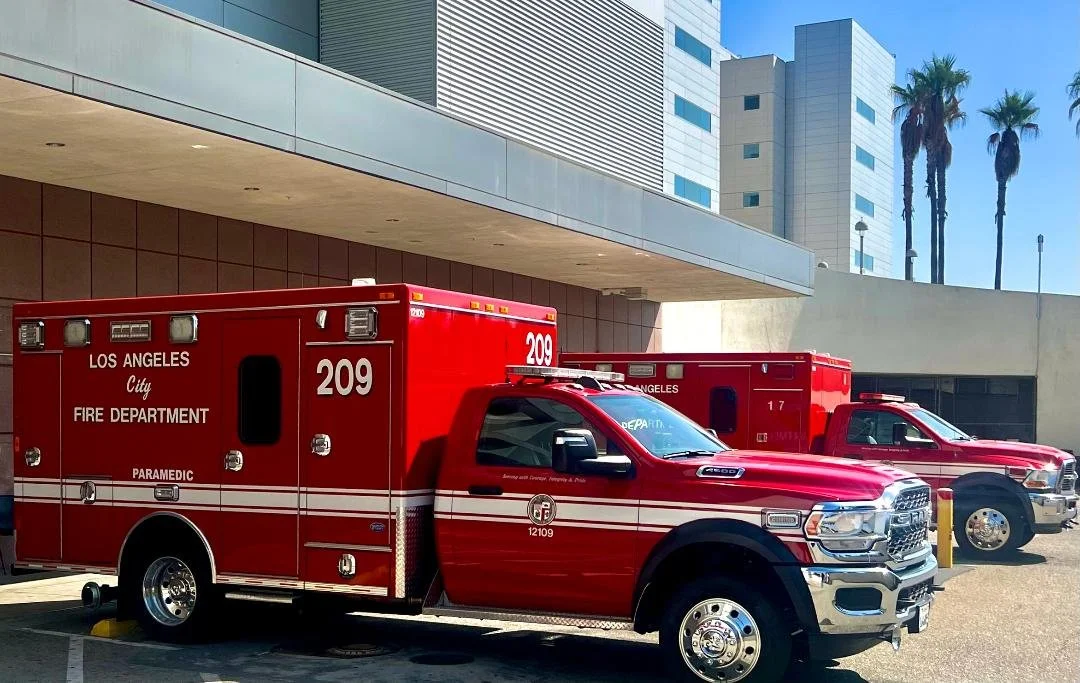We Asked Over 100 First Responders About Our Autism and Neurodiversity Training — Here’s What They Said
“This was an amazing training and I think that it should be provided to every department possible. The material provided gives a great opportunity for learning on how to assess and treat neurodiverse patients and not cause more stress, anxiety, and injuries.”
What Drives Our Mission to Train First Responders in Neurodiversity Awareness?
Over the past several months, we’ve had the privilege of delivering specialized training in autism and neurodiversity to more than 100 first responders across multiple departments. In addition to the sessions, we conducted post-training questionnaires to gather feedback, identify opportunities for improvement, and better understand the real-world impact of this critical education.
The responses we received were both humbling and deeply affirming.
This initiative stems from a personal and urgent mission — to close the gap between emergency services and the neurodiverse individuals they serve. For people with autism and other neurodivergent conditions, encounters with first responders can be particularly overwhelming. Without the right training, these situations can unintentionally escalate, leading to trauma, miscommunication, or even harm.
Our objective has been clear from the start:
To ensure that first responders are equipped with the skills, confidence, and compassion necessary to recognize neurodivergent behaviors, communicate effectively, and provide care that is safe, respectful, and person-centered.
“Good class! I have never had a class on neurodiversity, had no idea what that was. Heard of Autism but have not much dealings with it! Thank you!”
“Great interactive lesson. We walked away with more knowledge to take into the field.”
“Great presentation! This is an ongoing treatment area of EMS that still requires more continuous education to help understand how to best handle these cases.”
“I thought the information was clear and concise. I liked the interactive patient assessment part of the lecture.”
Why Is Understanding Autism and Neurodiversity Critical in Emergency Response?
Emergency response is built on split-second decisions, clear communication, and human connection. But when the behaviors and needs of a neurodivergent individual are misunderstood, even well-intentioned actions can result in escalation, misdiagnosis, or unintended harm.
That’s why this training matters.
Our program focuses on awareness, de-escalation, and communication strategies rooted in real-world scenarios that first responders regularly encounter. It’s designed not just to inform — but to transform the way responders engage with individuals on the autism spectrum and across the neurodiversity spectrum.
When a paramedic tells us, “This was extremely helpful and helped set my foundation,” it underscores a critical gap in emergency training — and the immense opportunity we have to fill it with knowledge, empathy, and better outcomes.
How Can We Build a More Inclusive and Compassionate Emergency System?
This training should not be a one-time experience — nor should it be reserved for a select few departments. The feedback we’ve received makes one thing clear: there is a growing, urgent need for ongoing neurodiversity education across EMS, fire services, and law enforcement agencies.
We are committed to scaling this program by building partnerships with local governments, medical institutions, and training academies to ensure that every first responder — regardless of rank or region — is empowered with the tools and understanding to respond safely, compassionately, and effectively.
Because in moments of crisis, every individual deserves to feel seen, heard, and respected.
To those who have already joined us on this journey — thank you. Your openness, your feedback, and your dedication are paving the way for a more inclusive and responsive emergency system.
Let’s continue building trust.
Let’s continue building bridges — one training at a time.
